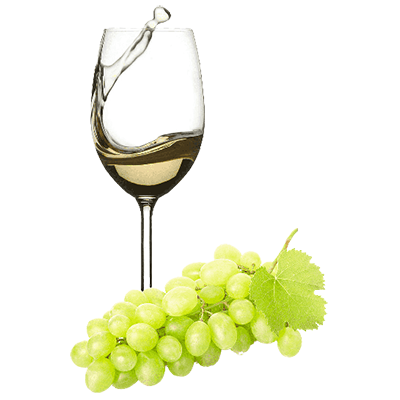
All You Need to Know about Cotes du Rhône
The Rhône Valley Wine Region
 All You Need to Know about Cotes du Rhône
All You Need to Know about Cotes du Rhône
The Cotes du Rhône AOC (Appellation d'Origine Contrôlée) is the second-largest appellation in France (after Bordeaux), and one of the oldest.
The AOC stretches from Vienne in the north to Avignon in the south, and from the western Massif Central foothills in the west to the Vaucluse and Luberon mountains in the east.
History of the Cotes du Rhône AOC
In the 1600s, regulations were created to govern wine production on the right bank of the Cote du Rhône. In 1737, a Royal Decree declared that all wines barrels from the area must be branded with the initials, CDR, to ensure quality.
The name was updated to Cotes du Rhône once the left bank was included in the appellation about a hundred years later. The Cotes du Rhône was officially declared an AOC appellation in 1937.
Grape Varieties Produced In The Cotes du Rhône Region
Only 21 grape varieties are allowed for cultivation in the Cotes du Rhône vineyards. The dominant red wine grape is Grenache, while others like Syrah, Mourvedre, Carignan and Cinsault are also grown here.
As for the whites, the most important grape is Grenache Blanc, followed by Clairette, Bourboulenc, Roussanne, Marsanne and Viognier.
The Four Appellations In Cotes du Rhône (According To Wine Quality)
Cotes du Rhône wine quality is divided into four different levels.
Here’s a quick look at them, so you’ll know what to expect when you see a CDR label.
A. Côtes du Rhône AOC
Cotes du Rhône is commonly referred to as a generic appellation as it is the entry-level classification of the AOC wines. It accounts for 50% of Rhône Valley production.
Most wines are red blends based on Grenache grape or Syrah, and production rules are not as strict as other levels. However, the wines must have a minimum of 11% alcohol and should be made from the 21 sanctioned grapes.
These are simpler wines, meant for easy drinking, and can be matched with everyday foods.
B. Côtes du Rhône Villages AOC
Cotes du Rhône Villages is a step up from Cotes du Rhône.
The Cote du Rhône villages appellation has a total of 3,000 hectares of cultivated land, and is made up of 95 authorized communes in the departments of Ardèche, Drôme, Gard, and Vaucluse. The Cotes du Rhône Villages wines are more complex than generic Cotes du Rhône, and are great wines for aging.
C. Côtes du Rhône (named) Villages AOC
The next level up the AOC ladder is Cotes du Rhône (named) Villages. Only 21 villages, including Vinsobres, Plan de Dieu and Laudun, are allowed to declare their names.
D. Côtes du Rhône Cru
The northern and southern crus occupy the top tier, and here’s where it can get confusing.
These 17 crus produce around 20% of Rhône wines, and they are:
- Côte-Rôtie
- Saint-Joseph
- Cornas
- Saint Péray
- Crozes-Hermitage
- Hermitage
- Condrieu
- Château-Grillet
- Gigondas
- Vacqueyras
- Vinsobres
- Beaumes de Venise
- Rasteau
- Lirac
- Tavel
- Cairanne
- Châteauneuf-du-Pape
These crus aren’t required to put ‘Cotes du Rhône’ on their label. Unlike Bordeaux wines, they’re only named after their villages, and not after the châteaux.
The single exception to this is Château-Grillet, which produces the rare northern white, Condrieu.
Cotes du Rhône wines range from the pleasant, immediately drinkable to the more pricey and collectible ones.
Now, let’s take a quick look at the winemaking process in Cotes du Rhône.
Cotes du Rhône Wine Making Processes
Most of the Cotes du Rhône wines are made using a semi-carbonic maceration, where grapes are fermented as a “whole bunch”, usually including their stems. The grapes are hand-picked to ensure that the fruit and stems are fully ripened.
The process of carbonic maceration extracts the color from the skins without removing the tannin. This method creates soft, fruit-forward wines with candy-like flavors.
Sometimes, the stems are removed to prevent the wines from being excessively tannic.
White wine is typically aged shorter than reds. In Châteauneuf-du-Pape, for example, whites are aged 3-6 months, but the red wine stays in the barrels longer for 10-18 months.
Character and Style of Cotes du Rhône Wines
Cotes du Rhône wines are generally meant to be enjoyed on release. Most of the wines don’t require aging, but some of them age beautifully with time.
The wines are incredibly varied in personality, mimicking the diversity of the terroir and soil.
